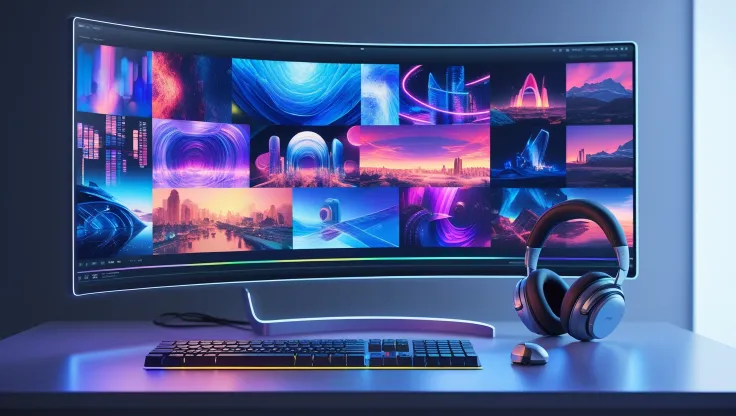Table of Contents
Introduction
Artificial Intelligence (AI) is no longer a futuristic concept—it’s already transforming the world of video editing. From automating mundane tasks to enhancing video quality with astonishing precision, AI tools are empowering content creators, marketers, and video professionals across industries.
In this in-depth guide, we explore the powerful benefits and real limitations of AI in video editing, helping you understand not just how it works—but whether it’s the right choice for your workflow.
What is AI in Video Editing?
AI in video editing refers to the use of machine learning algorithms, neural networks, and data-driven models to automate or augment video production processes. These tools can detect scenes, generate subtitles, optimize color grading, and even suggest music based on emotional tone.
AI editing doesn’t mean “robot replaces editor”—it means smart assistance, enabling faster, smarter workflows.
Powerful Benefits of AI in Video Editing

✔ Time-Saving Automation
AI tools can automatically cut footage, sync audio, and identify highlights—tasks that normally take hours. This boosts productivity for both solo creators and teams.
Internal Link Suggestion: Link to your article on “Top 10 Time-Saving AI Tools for Creators”
✔ Enhanced Video Quality
AI enhances visuals with automated stabilization, smart color correction, and upscaling, even converting SD content into HD using algorithms like Super Resolution.
✔ Cost Efficiency
By reducing the manual workload, AI can cut post-production costs significantly, especially for small businesses and startups.
✔ Accessibility for Beginners
With drag-and-drop AI editors, even non-professionals can create polished videos.
✔ Content Personalization at Scale
Platforms like YouTube and TikTok use AI to suggest edits for different audiences based on engagement data—a game-changer for marketers.
✔ Integration with Cloud & SaaS
Tools like Runway ML, Pictory, and Adobe Premiere Pro’s Sensei AI make collaboration and editing seamless from the cloud.
Real Limitations of AI in Video Editing
Creative Constraints
AI lacks human intuition, emotion, and artistic nuance. It can follow trends but can’t invent style or narrative complexity.
Dependency on Data Quality
Poor video input results in poor AI output. AI is only as good as the footage and context provided.
Lack of Human Touch
AI struggles with comedy timing, irony, or emotional storytelling—core elements in many creative edits.
Risk of Over-Automation
Too much automation can lead to generic-looking, uninspired content that doesn’t stand out.
Technical and Ethical Concerns
Issues like deepfakes, misuse of likeness, or copyright infringement must be considered when using AI-generated content.

Popular Tools Using AI in Video Editing
| Tool Name | Key Feature | Ideal For |
|---|---|---|
| Runway ML | Object removal, scene generation | Creators, artists |
| Pictory | Text-to-video, script editing | Marketers |
| Descript | Overdub, transcription | Podcasters, editors |
| Adobe Premiere Pro (Sensei) | Smart tagging, auto cut | Professionals |
Case Studies: AI Changing the Game
- YouTube Creators: Automating highlights and closed captions
- Newsrooms: Using AI to cut breaking news packages within minutes
- Agencies: Creating multiple ad versions in different languages using AI dubbing
AI vs Human Editors: Can AI Replace Creatives?
No. AI can enhance and speed up workflows, but it cannot fully replace storytelling, narrative control, or emotion-driven editing.
What AI can do is augment human creativity—not replace it.
SEO Tip: Optimizing AI-edited Videos for Search & Discovery
Make sure to:
- Use keyword-rich filenames and metadata
- Upload transcripts for better indexing
- Add schema markup
- Embed on your blog and link back from internal articles like “How to Rank Videos in Google Search”
How to Choose the Right AI Video Editing Tool
When evaluating a tool, consider:
- Features vs your goals (e.g., captioning vs storytelling)
- Integration with existing tools
- User interface and ease-of-use
- Pricing model and scalability
Future of AI in Video Editing

Expect:
- Hyper-personalized videos
- Real-time AI-assisted livestream editing
- Full generative video creation (text-to-video)
- Voice cloning and automatic dubbing across languages
Conclusion & Final Thoughts
AI is a powerful tool, not a total solution. For video creators and editors, it offers game-changing speed, automation, and efficiency, but it can’t replace the need for human creativity and storytelling.
Use AI to amplify your capabilities, not limit your vision.
Frequently Asked Questions (FAQ)
Can AI fully automate video editing?
No. While it can handle repetitive tasks, creative decisions still require human input.
What is the best AI tool for beginner video editors?
Tools like Pictory and Descript offer easy interfaces and great automation for non-editors.
How does AI save time in video editing?
By automating tasks like cutting, syncing, subtitling, and even suggesting transitions.
Are AI-edited videos SEO-friendly?
Yes, if properly optimized with metadata, transcripts, and structured data.

